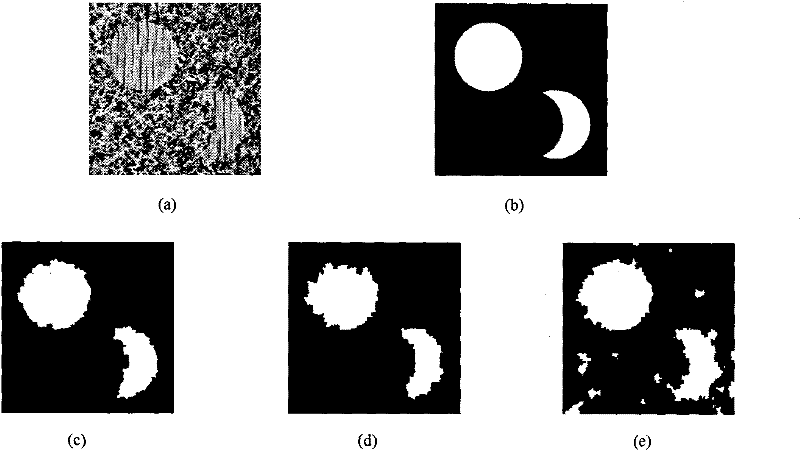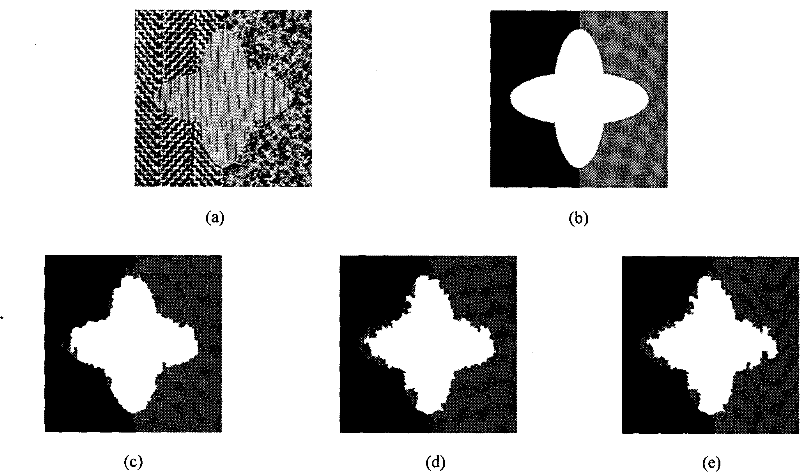Image segmentation method based on differential immune clone clustering
An image segmentation and immune cloning technology, applied in the field of target recognition, can solve problems such as reducing population diversity, affecting image segmentation results, and increasing population size, and achieves the effect of maintaining population diversity, avoiding premature convergence, and accelerating segmentation speed.
- Summary
- Abstract
- Description
- Claims
- Application Information
AI Technical Summary
Problems solved by technology
Method used
Image
Examples
Embodiment Construction
[0034] refer to figure 1 , the specific implementation steps of the present invention are as follows:
[0035] Step 1. Extract gray-level co-occurrence matrix and wavelet features from the image to be segmented.
[0036] The sliding window method is used to extract the features of several statistics of the image in the four directions [0°, 45°, 90°, 135°] pixel by pixel. For texture images, the contrast, homogeneous area, and energy of the image are extracted. and the 16-dimensional features of the four statistics of the correlation in the four directions; for the SAR image, the total 12-dimensional features of the three statistics of the image contrast, homogeneous area, and energy are extracted in the four directions, and the size of the sliding window It is 17*17. Both the texture image and the SAR image are subjected to three-layer discrete wavelet decomposition, and the 10-dimensional feature of wavelet energy is extracted, and the sliding window size is 16*16. Therefor...
PUM
 Login to View More
Login to View More Abstract
Description
Claims
Application Information
 Login to View More
Login to View More - R&D
- Intellectual Property
- Life Sciences
- Materials
- Tech Scout
- Unparalleled Data Quality
- Higher Quality Content
- 60% Fewer Hallucinations
Browse by: Latest US Patents, China's latest patents, Technical Efficacy Thesaurus, Application Domain, Technology Topic, Popular Technical Reports.
© 2025 PatSnap. All rights reserved.Legal|Privacy policy|Modern Slavery Act Transparency Statement|Sitemap|About US| Contact US: help@patsnap.com



